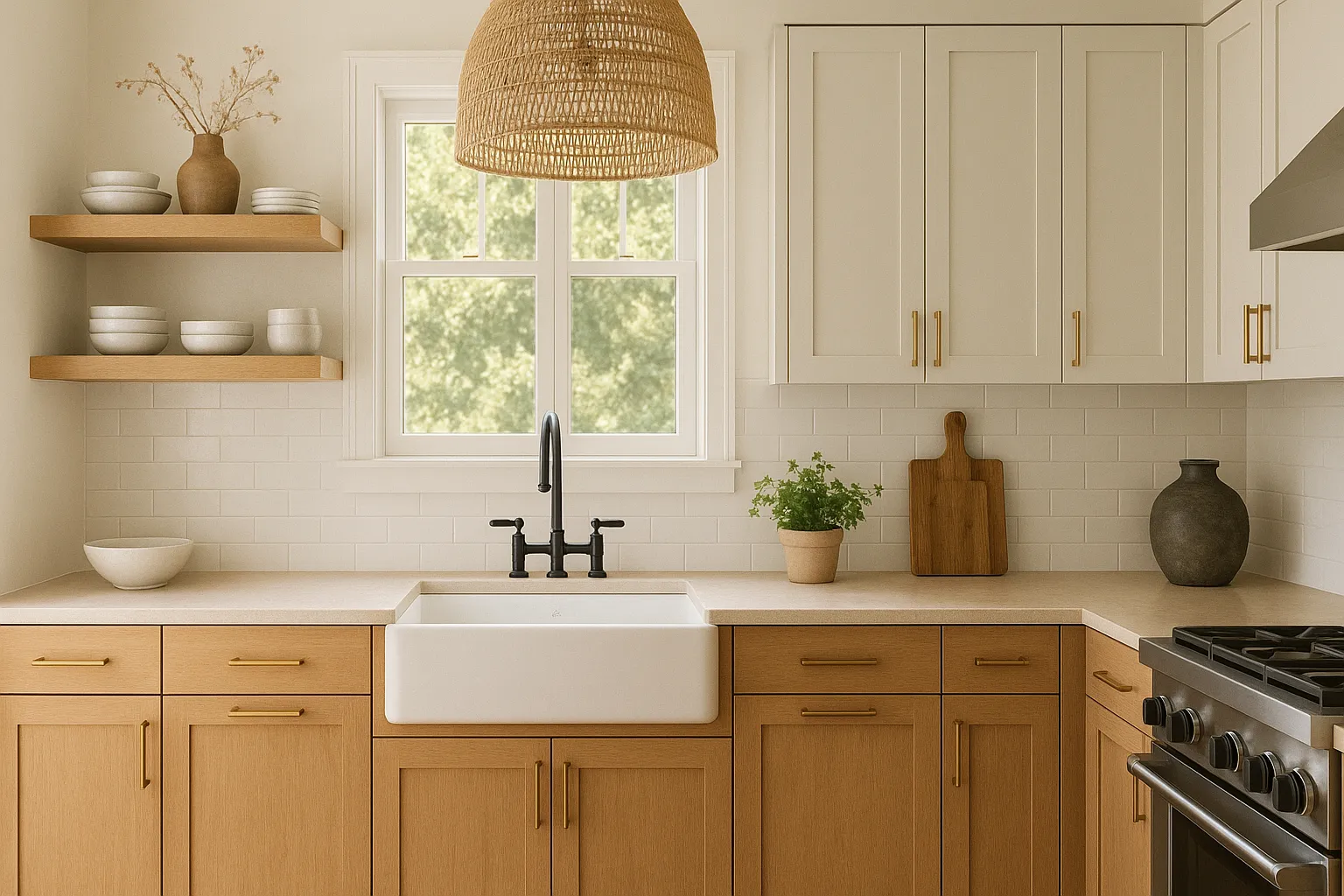Top 5 Kitchen Renovation Trends for 2025
Discover the latest kitchen renovation trends that are shaping modern home design in 2025.

Top 5 Kitchen Renovation Trends for 2025
As we move through 2025, kitchen renovations continue to evolve with a focus on functionality, sustainability, and smart technology integration. Whether you’re planning a full kitchen overhaul or just looking to refresh your space, here are the top trends that are defining modern kitchen design this year.
1. Multi-Functional Kitchen Islands
Kitchen islands are becoming more than just prep surfaces. In 2025, we’re seeing islands that serve multiple purposes:
- Integrated appliances: Built-in wine coolers, microwaves, and even induction cooktops
- Flexible seating: Adjustable-height counters that accommodate both dining and work
- Hidden storage: Concealed cabinets and drawers that maximize organization
- Tech integration: Built-in charging stations and wireless device charging surfaces
These versatile islands are transforming kitchens into true multi-functional spaces that serve as the heart of the home.
2. Sustainable and Eco-Friendly Materials
Environmental consciousness is at the forefront of kitchen design in 2025:
- Recycled countertops: Surfaces made from recycled glass, paper, or composite materials
- Reclaimed wood: Cabinetry and accents crafted from salvaged timber
- Low-VOC finishes: Paints and sealers that improve indoor air quality
- Energy-efficient appliances: ENERGY STAR certified models with smart features
- Water-saving fixtures: High-efficiency faucets and filtration systems
These sustainable choices not only reduce environmental impact but also create healthier living spaces.
3. Smart Kitchen Technology
Technology integration is becoming seamless and sophisticated:
- Voice-activated controls: Smart speakers that manage lighting, temperature, and appliances
- Connected appliances: Refrigerators that track inventory and ovens that can be preheated remotely
- Smart storage solutions: Cabinets with built-in lighting and organizational systems
- Touchless fixtures: Faucets and trash cans that respond to motion for improved hygiene
These innovations make kitchen management more convenient while adding a modern touch to traditional spaces.
4. Warm Metallics and Mixed Finishes
Gone are the days of matching all metal fixtures perfectly:
- Mixed metals: Combining brushed brass, matte black, and polished nickel for visual interest
- Warm tones: Copper, rose gold, and brass finishes that add warmth to modern kitchens
- Matte textures: Soft-touch surfaces that provide contrast to glossy cabinetry
- Aged patinas: Intentionally weathered finishes that add character and depth
This trend allows for personalization and creates kitchens with unique personalities.
5. Open-Concept Integration with Defined Zones
Modern kitchens are part of larger living spaces while maintaining distinct functionality:
- Defined work zones: Clear separation between prep, cooking, and cleanup areas
- Flexible layouts: Movable islands and modular components that adapt to different needs
- Seamless transitions: Flooring and design elements that flow between kitchen and adjacent spaces
- Hidden storage: Appliances and clutter concealed behind cabinet doors for clean sightlines
This approach maximizes both social interaction and kitchen efficiency.
Conclusion
The kitchen renovation trends of 2025 reflect a balance between aesthetic appeal and practical functionality. From sustainable materials to smart technology integration, these trends are designed to create spaces that are not only beautiful but also enhance daily living. Whether you’re incorporating one trend or several, these updates can transform your kitchen into a modern, efficient, and environmentally conscious space that will serve your family for years to come.
When planning your renovation, consider which trends align with your lifestyle and budget. Remember that quality, timeless elements often provide better long-term value than trendy features that may quickly become outdated.